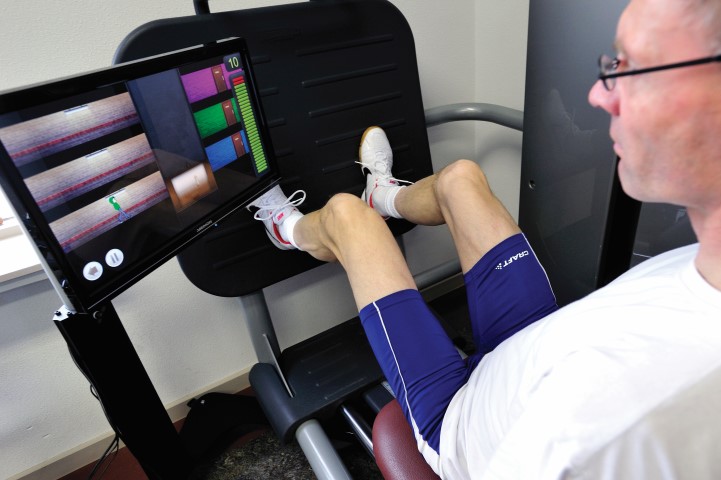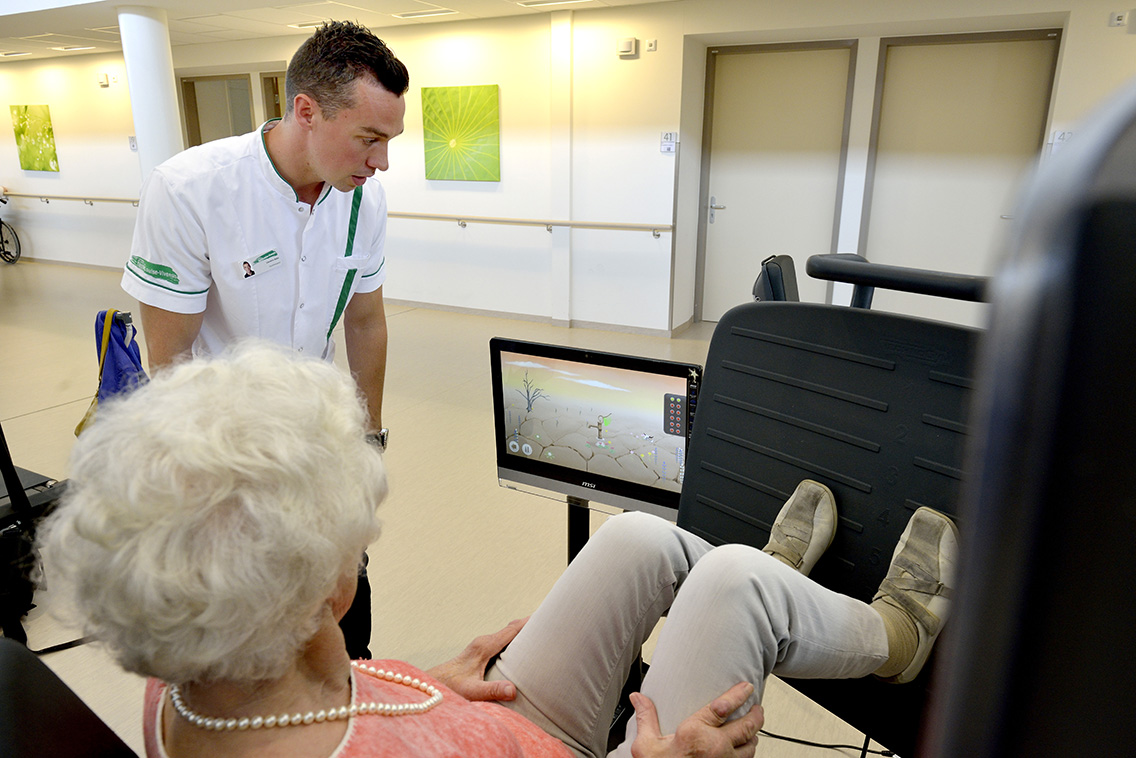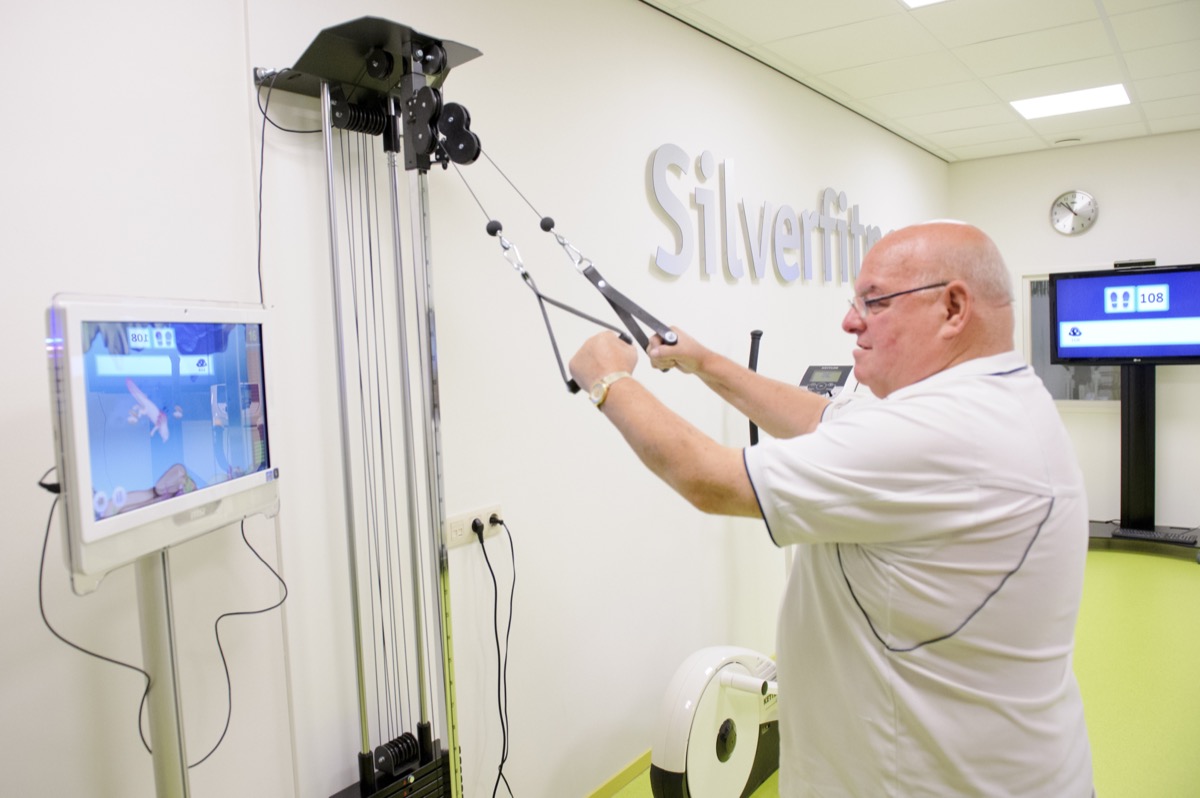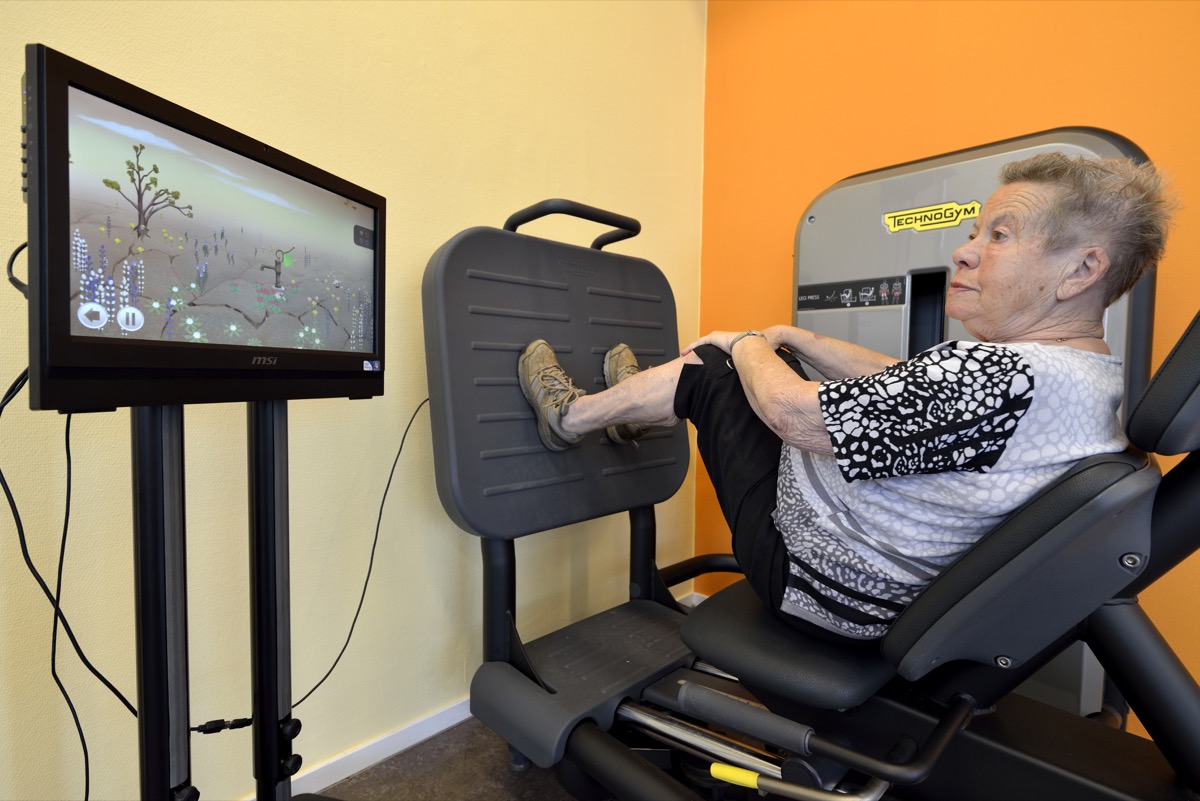How does it work?
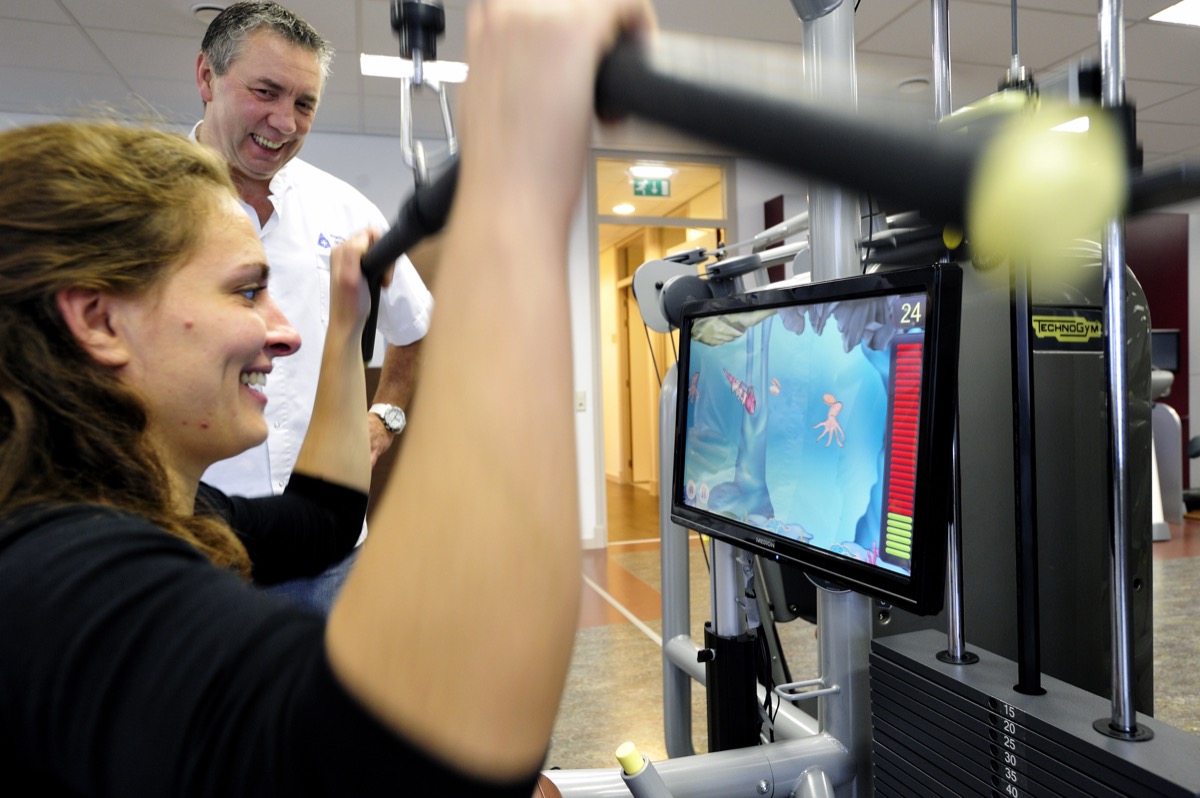
The sensor of the SilverFit Newton measures how far the client moves the stack of weights on the power unit. The user-friendly touchscreen shows the progress of the exercise and the number of re-petitions that have been carried out. The number of sets and rehearsals can be set in advance by the therapist, after which the client can perform the exercise and the rest breaks independently. Through the interactive exercises, the client is distracted from the number of rehearsals and the time.
Strength training in geriatrics
Although functional training is often preferred, strength training has an important place in geriatrics. Strength training is used, for example, after an orthopedic procedure or when sarcopenia is strengthened after prolonged bed-riddenness.
Sarcopenia
Sarcopenia, the loss of muscle mass and muscle strength, is common in the elderly. Older people with sarcopenia are more limited in daily life. Climbing stairs, shopping or getting up from bed are a few examples of activities that become more difficult with muscle loss. The kngf standard Movement intervention for frail older people (2015) states that strength training is effective in combating the loss of muscle mass and strength. That is why strength training is an important component of an exercise program.
"Strength training works even for the elderly in nursing homes."
Andrea Maier, Professor of Gerontology in TV program Zomergasten
Exercises with feedback
The SilverFit Newton offers exercises with continuous feedback. This ensures that standard exercises become more fun. For example, by counting down the number of rehearsals, by indicating the rhythm in which you practice, or by showing the recovery time.
Keep track of the client's progress
The system offers the possibility to compare performance over time. The scores of the games are stored separately for each client. This makes it possible to view and discuss the performance with the client, therapist and family members.
For tests
The SilverFit Newton can be used when conducting a number of standard tests, such as a 1-rm test in which the maximum lift weight is calculated based on a number of interpolations.
 Nederlands
Nederlands  English
English  Français
Français  Deutsch
Deutsch 
